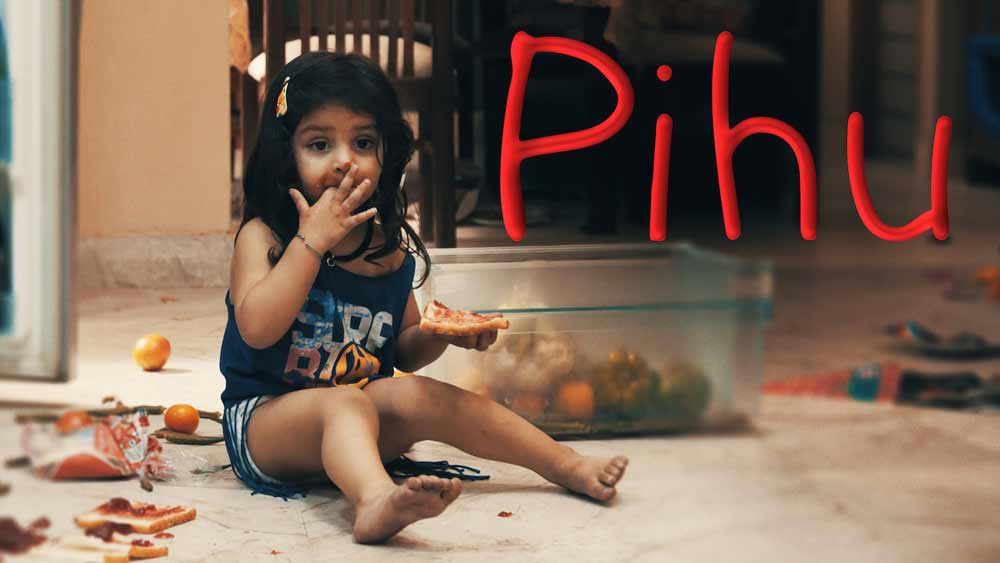Case Studies
Recently, I read about some case studies from the book The Global Educator: Leverage Technology for Collaborative Learning and Teaching. It was written by Julie Lindsay.
On pages 229-244, multiple case studies were listed. Here are some that were my favorite:
Check out Learning2!
Reading about Case Study 4.2, I have learned that Learning2 is a face to face conference with a focus on using technology to support global learning. Learning2 has allowed global conferences to go on in many countries across the world, including 4 continents. It was developed in 2007. The flaw of this technology is that it is not accessible to every country, therefore leaving a lot of people unable to use its technology. Other than that, it is a great tool for video conferences with people in different countries.

Check out Our Global Friendships!
In Case Study 4.5, Our Global Friendships is a small virtual community of global educators with one common goal: bring together a group of educators to implement global projects with other educators and classrooms. This platform allows a lot of friendships to form and connections to be made all over the world. It is a great way to learn more about diverse parts of other countries and challenges different people face, and allows you to work through solutions to fix them. The downside of Our Global Friendships is that it is not widely known and remains a small active community. However, it is helping the educators who are apart of it and allows them to connect to people all over the world for global learning.
Virtual Reality… A Thing of the Future… or the Past?
The use of virtual reality in classrooms is a new commodity. Websites such as Flipgrid and Google Earth help students connect globally to the world and learn.
What is Flipgrid? Flipgrid is a “social learning platform that allows educators to ask a question, then the students respond in a video. Students are then able to respond to one another, creating a “web” of discussion” (thetechieteacher.com).
In addition to that, Flipgrid allows students to get a ‘code’ to print out. If a camera is waved over the code, then a video specific to that code will pop up. This is great for a fun, entertaining activity with your students, and in addition, it has the ability to have other classrooms come to life around the world in your very own classroom if you use one of their codes.
Check out this website to learn all about Flipgrid’s AR! p://blog.flipgrid.com/news/ar

Google Earth allows students to have a real-life view of places all over the world. In one touch, students can walk down the streets of Peru and take down observations as they go. This allows students to get a hands-on experience of what it’s like to be in other countries.
Check out this great video showing a teacher using Google Earth in his lesson plan. He was able to use it to teach students about relative locations in the world!

All in all, I consider virtual reality tools to be a vital tool in the classroom. They give students a fun, new perspective on learning!
Work Cited
https://www.thetechieteacher.net/2018/07/flipgrid-social-learning-platform.html
Check out the website Exposure!
Exposure is an awesome website to create and share stories. It allows videos, images, and texts to be combined to create a high quality and entertaining story.
I wrote one about an experience I had getting fired. Check it out below!
https://emilykrowe27.exposure.co/getting-fired-what-i-learned?source=share-emilykrowe27
In the beginning, I struggled to create more pages, but eventually figured out that you had to just keep adding text to scroll down. Adding pictures was a breeze, but I had difficulty deleting the pictures I used from my website.

Man Walks 21,000 miles – WHY?! The story of the Out of Eden Walk

Paul Salopek was an ordinary writer and journalist from the United States. However, two things set him apart from others: he was interested in walking the pathways of the first humans who migrated out of Africa in the Stone Age. The second thing is that he actually did it.
Paul planned to document every single step of the way through blogs, social media, etc. And he has. He is in year 6/10 of his journey, and has walked about half of the 21,000 miles.
Paul has seen cultures across Africa, and gotten to meet thousands of people along his journey. They have given him knowledge, advice, and little pieces of culture along the way. He, in return, has told their stories.
Paul’s walk is funded by donations from National Geographic, and random donations from every-day people. His walk allows us to get more information on the toll it took on people who made the great migration, as well as documentation of the world across the continent Africa.

What are Norms and how do I use them?
Hi, welcome back to my blog. A Norm is a typical behavior that is practiced when collaborating globally. You use them to collaborate with people across the globe.
One of the Norms’ purpose is “Cultural Exchange”. The guiding question is: “Is the purpose of the project clear?” This Norm is especially important because it is crucial to know what exactly your end-goal is and what you are supposed to be doing… before you start. If there is a language barrier, there needs to be a solution.
Another Norm’s purpose is to collect holiday and out of school information from each participating school. This way, everyone knows when there may be no responses. If not, then parties may become frustrated and a lack of communication will occur. A suitable time to collaborate needs to be discussed.

Check out this link!
Pros and Cons of Edpuzzle
Edpuzzle is a great way for educators to share videos with their students, as well as test their knowledge along the way. It was founded in 2013 by a group of former teachers who thought it would be a great tool for educators to reinforce lessons to their students in and outside of the school walls. However, like any tool, there are pros and cons. Here are some reasons why Edpuzzle is a great online resource, and maybe why it’s not so great:

Pros:
- Edpuzzle is available on the app store and online, making it easily accessible to students in whatever their situation is.
- Videos can be taken from YouTube or directly uploaded
- Open ended questions or notes can be put into the videos at any point
- Students’ viewing of the video can also be tracked
Cons:
- Students might not be actually be watching and comprehending the video
- Must have internet access – could cause problems for some students
- Does not give the option for group video access – just individual
Check out this tutorial on how to use Edpuzzle!
What is my overall takeaway?
I enjoy the concept of Edpuzzle, and would definitely implement it 2nd grade and up in my classroom.
What I learned so far: The power of social networking
Over the last 8 weeks, I have become an active member on Twitter. Throughout my time spent on the app, I have been able to witness first hand the power of social networking.
Many educators use social media to connect with other educators to share ideas, inspiration, opinions, news, and for personal gain. The inspiration ranges from classroom ideas, activities, and learning and teaching techniques. News ranges from education articles, psychology, and among other things.

Educators connect from all ends of the globe. This has only been made possible and normalized within the last ten-fifteen years. Before then, letters and phone calls were often the only means of communication between classrooms.
Valuable information can be found from educators from all around the world. Check out this video about why teachers should use Twitter:
I have been able to watch relationships form between educators who are connected by one thing: the love of learning. I have been able to make my own relationships with educators as well, and hope to make even more connections through time!
All in all, Twitter is definitely something to check out if you are interested in expanding your personal learning network!
This week, I watched a foreign film called: Pihu
Good afternoon all. It has been a while since I last posted! This week I watched a foreign film called Pihu. It is a 2018 film based in India.
It can be found on Netflix by searching: “Pihu”. It is from the perspective of a two year old girl whose mom died from suicide, and her dad left on a business trip. Because of this, she was left alone for several days and had to fend for herself.

How was this film different than any other American film?
Well, it wasn’t that different. The apartment the family lived in was very similar, if not identical to an American one. It was large and had two stories (which might be the only difference, as most apartment buildings in America have only one floor apartments). Cleaning products looked different. For example, a bleach bottle looked like a milk jug. The girl tried to drink it, but she couldn’t get it open. The TV channels were obviously not American as well.
The movie takes place mainly in an apartment. Because of this, it was hard to gauge a lot of the cultural differences. For one, Pihu and her family wear beautiful traditional dresses. Typically, Americans wear just a t-shirt and jeans around the house.
Pihu eats birthday cake, heats pita bread, and makes grilled cheese and peanut butter and jelly sandwiches. This is typical to what Americans eat, especially children.
The birthday party is like any other birthday party for a child, and the weather was sunny. The father travels by plane, and they have almost identical things in their apartment that we have in America. The landscape is city-like.
All in all, Pihu is similar to an American film. A different language is spoken, but most things are very similar to America. I would recommend this movie. It was interesting to see things from a child’s perspective.
Twitter: The good, the bad, and the ugly
Hello all. Recently, I created a professional Twitter account. I had used Twitter in the past, but hadn’t owned my own personal account in about five years.
To tell you the truth? Twitter still does not particularly interest me. I love pictures, and I love that Instagram is picture based, but Twitter is not. Twitter does not hold my attention as much as other social medias.

However, I can also acknowledge that Twitter is more useful for creating and maintaining professional relationships, as well as reaching a wider audience through likes and retweets.
The layout of Twitter is still something I have to get used to, and is definitely different from the last time I was active on it.
The conversations I have had with professionals on Twitter have changed the way I think about learning. Most, if not all, of the professionals on Twitter do not get paid for communicating with regular people on the internet, as well as maintaining intelligent conversations and expressing advice and ideas. I have had several in-depth conversations with professionals on Twitter, and I was surprised at how dedicated they were to interacting with me, a future educator.

I have learned more about new technology in the classroom that I will definitely use when I am a teacher. That information is crucial to me.
I will continue using Twitter for this class, however, might switch over to Instagram for a professional account. I believe a lot can be expressed in pictures, as well as longer captions.

Do you know how to live sustainably? Most of us do, but choose not to.

According to Google, sustainability is defined as: “the capacity for the biosphere and human civilization to co-exist”.

There are three aspects of sustainability that can be agreed upon by leaders around the world: social, environmental, and economic. Currently, the main focus is on social and environmental aspects.
If you didn’t already know, the world is being overworked. Too much carbon emissions are being released into the air and damaging the ozone layer beyond repair. Because of this, the world is heating up. It can’t deflect all of the sun’s rays that it used to be able to. Ice caps are melting, species are dying, etc.
Besides the amount of damage our every day actions are doing to the environment, our resources are also dwindling. Fossil fuels are running out, and we are using all of our reserves for clean water. We use a large amount of our land for animal agriculture, and we are constantly creating non-recyclable garbage that fills our oceans, land fills, and forests.
What is the average person doing to combat non-sustainability?
In all truth, nothing. Most people do not limit their single-use plastics, limit their meat consumption, or use renewably sourced transportation. Not all things can be helped, but some can. Despite this, many people, including myself, look sustainability in the eye and then turn away. Is it because change is hard, or do we just not care enough? Maybe it’s even because we aren’t educated enough.
What are some things we all can do to help live more sustainably?
- Eat less meat. Did you know that animal agriculture is one of the least sustainable food practices on Earth? Despite being unethical in some cases, animal agriculture takes up mass amounts of land, uses mass amounts of water, and creates CO2 emissions that help damage the ozone layer. As the population of humans increases, more and more meat will be required to feed them. That will require more land, and more water, and more CO2 emissions. None of these practices are sustainable. Fresh water accounts for 2-3% of the world’s water, and that number is dwindling. Land will not increase on Earth, and the ozone layer will continue to thin as our meat consumption increases as a species.
- Use public transportation, walk, or get an electric car. The amount of fossil fuels we have on Earth is not increasing, however, carbon emissions is. Whenever possible, reduce your carbon footprint by taking the bus, carpooling, walking, or if you one day have the opportunity to do so, get an electric car.
- Limit single use plastic. Use a reusable cup and metal silverware. Don’t buy single-use plates and utensils. Say no to unnecessary items given out by restaurants and stores such as straws and other plastics.
- Most importantly, do your own research. Find your own ways you can help live a more sustainable life.
Check out this link for more ways to live sustainably!
What will happen if humans can’t combat non-sustainability?
If humans can’t find a way to make use of renewable elements such as solar power and wind power to replace the most fuel-consuming aspects of life, future generations will suffer. Global warming will increase at an alarming rate, more species will continue to die, and the Earth will fill up with garbage.